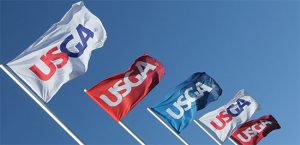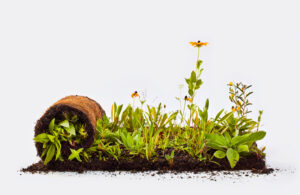USGA announces $1.9M in golf course sustainability research grants for 2020
Continuing its 100-year commitment to providing scientific innovations for the golf industry, the United States Golf Association (USGA) will fund 73 separate research grants totaling nearly $2 million in 2020. This research funding is part of the organization’s annual investment in helping courses to improve the golfer experience while reducing the consumption of key resources.
Since the founding of the Green Section in 1920, the USGA has supported the largest private turfgrass and environmental research effort in the history of golf. The USGA Turfgrass and Environmental Research Program (TERP) is one of several continuous efforts led by the Green Section aimed at enhancing golf course sustainability. The program develops and supports research that produces a healthier environment and improved playing conditions.
Since the research program’s inception, the USGA has invested more than $41 million to advance golf by using science and innovation as the foundation to impact thousands of courses and millions of golfers.
“Research has been a core function of the Green Section since its founding,” said Mike Davis, CEO of the USGA. “These findings have led to reduced operating costs, improved turf health and more enjoyable on-course experiences for golfers. In addition, our impact extends well beyond golf, providing direct environmental benefits, fostering recreational opportunities and offering much needed green space for local communities.”
The 2020 grant recipients – 16 of which involve new projects – will receive an average of $25,000 this year. Notable grant support includes a focus on conserving water by better understanding new technologies and the social aspects of irrigation scheduling through the University of California, Riverside. Another project focuses on the continuing effort to define the value of golf courses from an ecosystem services perspective through the University of Minnesota.
Through the program’s emphasis on sustainable turfgrass management and environmental protection, the USGA has improved the efficiency of key areas of course management, including water conservation, pesticide and nutrient distribution, and turfgrass breeding. Most notably:
Golf’s use of water has decreased by 19 percent since 2005, in part due to research-based irrigation methods such as employing weather data in plant water-use estimates, replacing potable irrigation water with recycled wastewater, and the adoption of precision irrigation technologies.
USGA research has contributed to the reduction of an estimated 86,000 tons of annual fertilizer use on golf courses since 2007 and has defined application strategies that limit the transport of nutrients to surface water and groundwater.
USGA-supported turfgrass breeding programs have developed more than 30 cultivars that use fewer resources and produce better playing conditions. These cultivars have been used worldwide at major sports facilities, general grounds and even home lawns.
Research from the program also has contributed to the USGA recommendations for putting green construction, which produce improved putting surfaces that are resistant to compaction, drain quickly and retain subsurface moisture.
For complete summaries of current research projects, visit usgatero.msu.edu. Summaries from research conducted in 2019 will be added in April 2020.
Led by Cole Thompson, Ph.D., the research program is part of the USGA’s mission to champion and advance the game through an annual $10 million investment to support the health of courses. Universities or research companies submit grant applications that are reviewed by 17 scientists on the TERP committee. As part of its ongoing mission to advance the game, the USGA will complement current turfgrass and environmental research with projects that benefit other areas of course sustainability, including golfer experience.













